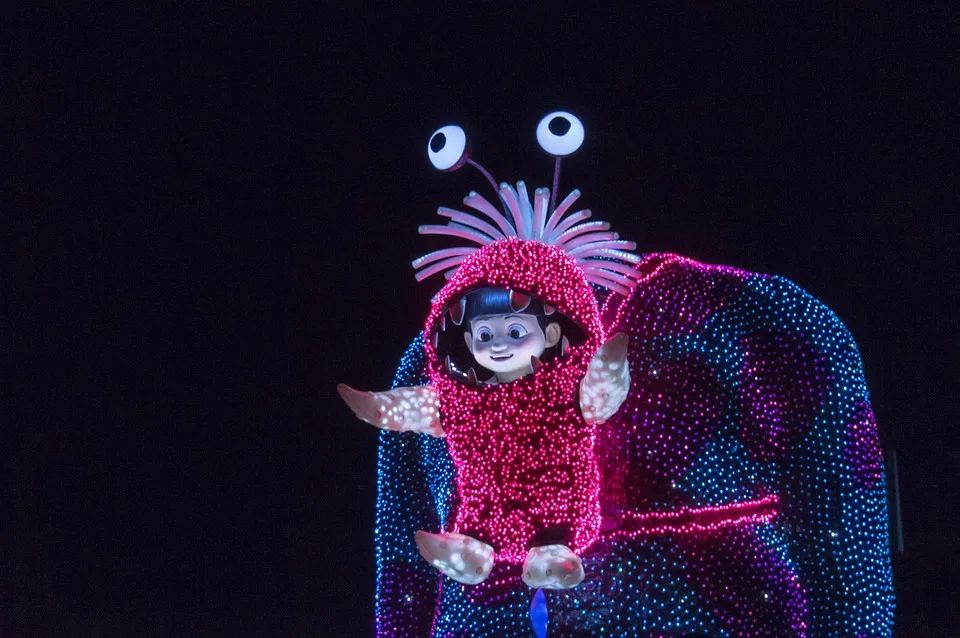The evergreen password of creativity.
Editor’s note: This article comes from the WeChat public account “Noteman” (ID: Notesman) , author Tian Qing.

Note Jun invites you to think before reading:
-
How to stimulate the continuous creativity of the team?
-
The team is too liquid, how should we accumulate innovative experience?
-
In the face of rapid technological change in the creative industry, how should managers respond?
Last summer, Xiao Nazha, who combed two balls of meat, put on smokey makeup, and showed small teeth with a smile, touched the hearts of countless people.
Many people saw their lives on Xiao Nazha: seeking, striving, not being understood, feeling lonely, but also being loved.
As Goethe puts it: “People who have never cried in the long night are not enough to talk about life.”
An exquisite and well-produced film, some people are moved, some people see Zhe Si, and some people see the future of China’s original animated movies.
However, can the director Dumplings really carry the banner that the audience expects?
Continuous innovation is a tempering of the creator’s mind.
When the animation master Hayao Miyazaki was 75 years old, he still suffered because of creation, and he still had to be anxious, angry, and desperate.
How can Dumplings and his team ensure that innovation will never dry up?
First, build a “movie universe”, create IP linkage strategy
Many people see “Jiang Ziya” in the egg at the end of “Nazha”, they are speculating: Chinese animation film is about to build a “seal universe”?
What is the “movie universe”?
Simply put, it was in the 1940s that Disney set out to use the concept of “worldview” to animate, using multi-dimensional, multi-dimensional character frames and plot stories to share or form a “integrity” of a unified worldview Grand Animation WorldWorld “.
In recent years, several major film companies in Hollywood are competing to become their own “film universe”. The advantages of doing so are:
1 、 From the announcement, all the series of movies can enjoy the mother IP bonus, which naturally has the box office base and topical popularity, which will bring unlimited commercial potential;
2 ﹤ In terms of creation, the protagonist and plot of the story can “come together” with each other, each individual movie can borrow from each other, and finally even integrate a “combination set”.
For example, there are more than 20 movies under the Marvel system: “Iron Man”, “Thor”, “Spider-Man”, “Captain America”, “Dr. Strange”, “Black Panther”, and finally all heroes The characters are stewed in one pot and come to the “Avengers” series.
The Pixar system also includes: “Toy Story”, “Nemo Story”, “Superman Story”, “Racing Story”, “Gourmet Story”, “Robot Story” and so on.
Over the past few years in China’s animation films, in addition to “Naza”, “The Return of the Great Saint” and “White Snake” have also chosen the familiar mythical IP as the theme of creation.
It ’s not difficult to understand. An unknown director and production team really needed a well-known IP to let the work take advantage of the box office in order to be guaranteed at the box office.
The big director ’s movie borrows his own director IP and actor IP, and the new animation movie can only borrow the story IP of the work itself.
The IPs of the previous animated movies all existed at a single point, making it difficult to form an IP synergy. Until “Naza” came out, in the small film at the time of the film’s release, Sun Wukong in “The Return of the Great Lord” and the little Nezha in “Naza” came to a “Fanwai Biography”.
The producer is also emphasizing that the production team comes from “The Return of the Great Saint”, “Big Fish Begonia” and other teams, plus the “Nazha” eggs at the bottom of the film, it really made the audience believe that some people have integrated the resources of the work. These scattered single-point works are integrated into a big game.
Actually, from a business model perspective, animated movies are not a good business. The production cycle is long, and the investment return cycle is also long.
Ordinary movies take 2 to 3 years, and animated movies grow out of the sky. It is very common for Pixar to produce a movie for 4 to 5 years, so it is particularly necessary to share a “movie universe” work alternately.
For example, for the director Dumplings, the next work after “Nezha” may not appear until 4 ~ 5 years, but the public will be able to see “Fengshenbang” this year”, This is only for the production company, the long waiting time for earnings.
Secondary creation process cannot be standardized, good ideas are all changed
Movies are still works of art in essence, and works of art cannot standardize the production process to ensure 100% successful income expectations.
Of course, it is precisely uncertainty that is the charm of art. But for the production team, there is always a high risk. I thought that Pixar was sold to Disney because of the unstable income.
But the most amazing thing about Pixar is that after the filming of Toy Story by Qing Shi, the series of animated films produced in succession were both well-received and well-received. The ability was also transferred to Disney.
Pixar CEO at that time became Disney CEO. This co-founder, Ed Camel, trusted and supported by Jobs, had unique and interesting insights into creative management. He took the earliest ideas Call it: “ugly baby” (ugly baby).
There are two meanings here:
First, most children are not good-looking when they are born, so do n’t worry, the same is true for creative works;
Secondly, as a child’s “parent”, it takes patience and time to cultivate, so that the “child” can eventually transform beautifully.
So, as a creative enterprise, you need to understand that good ideas are constantly iterated, rather than relying on the glory of a certain talent, the company needs to protect those small ideas that were not perfect when they were born.
The Pixar movie plot we are familiar with now is actually completely different from the final plan when it was first designed.
For example, one of the protagonists of “Monster Company” is a very cute 7-year-old girl, but in fact, the protagonist of the script was a 30-year-old male accountant; while “Flying House Travel”, the initial design is two brothers


